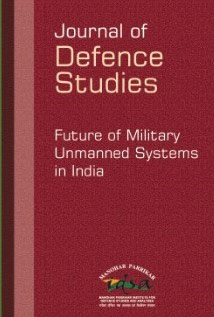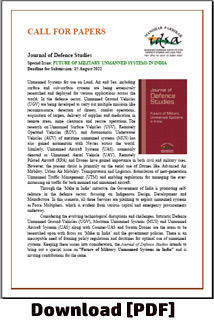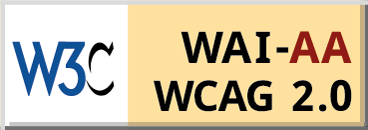Journal of Defence Studies: Call for Papers
Journal of Defence Studies
Special Issue: FUTURE OF MILITARY UNMANNED SYSTEMS IN INDIA
Download Concept Note [PDF]
 Unmanned Systems for use on Land, Air and Sea, including surface and sub-surface systems are being extensively researched and deployed for various applications across the world. In the defence sector, Unmanned Ground Vehicles (UGV) are being developed to carry out multiple missions like reconnaissance, detection of threats, combat operations, acquisition of targets, delivery of supplies and medication in remote areas, mine clearance and rescue operations. The research on Unmanned Surface Vehicles (USV), Remotely Operated Vehicles (ROV), and Autonomous Underwater Vehicles (AUV) of maritime unmanned systems (MUS) has also gained momentum with Navies across the world. Similarly, Unmanned Aircraft Systems (UAS), commonly denoted as Unmanned Aerial Vehicle (UAV), Remotely Piloted Aircraft (RPA) and Drones have gained importance in both civil and military uses. However, the present thrust is primarily on the aerial use of Drones like Advanced Air Mobility, Urban Air Mobility, Transportation and Logistics, formulation of next-generation Unmanned Traffic Management (UTM) and enabling regulations for managing the ever-increasing air traffic for both manned and unmanned aircraft.
Unmanned Systems for use on Land, Air and Sea, including surface and sub-surface systems are being extensively researched and deployed for various applications across the world. In the defence sector, Unmanned Ground Vehicles (UGV) are being developed to carry out multiple missions like reconnaissance, detection of threats, combat operations, acquisition of targets, delivery of supplies and medication in remote areas, mine clearance and rescue operations. The research on Unmanned Surface Vehicles (USV), Remotely Operated Vehicles (ROV), and Autonomous Underwater Vehicles (AUV) of maritime unmanned systems (MUS) has also gained momentum with Navies across the world. Similarly, Unmanned Aircraft Systems (UAS), commonly denoted as Unmanned Aerial Vehicle (UAV), Remotely Piloted Aircraft (RPA) and Drones have gained importance in both civil and military uses. However, the present thrust is primarily on the aerial use of Drones like Advanced Air Mobility, Urban Air Mobility, Transportation and Logistics, formulation of next-generation Unmanned Traffic Management (UTM) and enabling regulations for managing the ever-increasing air traffic for both manned and unmanned aircraft.
Through the ‘Make in India’ initiative, the Government of India is promoting self-reliance in the defence sector, focusing on Indigenous Design, Development and Manufacture. In this scenario, all three Services are planning to exploit unmanned systems as Force Multipliers, which is evident from various capital and emergency procurements underway.
Considering the evolving technological disruptions and challenges, futuristic Defence Unmanned Ground Vehicles (UGV), Maritime Unmanned Systems (MUS) and Unmanned Aircraft Systems (UAS) along with Counter-UAS and Swarm Drones are the areas to be researched upon with focus on ‘Make in India’ and the government policies. There is an inescapable need of framing policy regulations and doctrines for optimal use of unmanned systems. Keeping these issues into consideration, the Journal of Defence Studies intends to bring out a special issue on “Future of Military Unmanned Systems in India” and is inviting contributions for the same.
Topics of Interest
- Military Drones on Land, Sea and Air
- Counter-measures for Drones and Drone Swarms
- Challenges to Indigenisation of Drone/Counter Drone Technology
- Certification and Quality Control Requirements
- Airspace Management
- HR Issues of Military Drone Specialists
- Policy Regulations and Doctrines for Optimal Use of Military Drones
|
Submission:
Contributors may submit articles/commentaries/opinion pieces to the Associate Editor, Journal of Defence Studies at jds.mpidsa@gov.in latest by 15 August 2022. A full-length analytical article should be in the range of 4,000–8,000 words; the word count range for a Perspective/Commentary is 2,000–3,000 words. The contributions will be double blind peer-reviewed following the journal’s standard review process, and the honorarium will be paid for selected articles in keeping with our usual practices. More details about the journal are available at https://www.idsa.in/journalofdefencestudies For further queries, contact: Ms Madhavi Ratnaparkhi Email: jds.mpidsa@gov.in; Landline: +91-11-26717983; Extn: 7231 |
|
Guidelines for Contributors (JDS Special Issue:Future of Military Unmanned Systems in India) Format
References All citations/references to others’ works should be clearly mentioned in the notes (footnotes), with a corresponding note cue in the text. The format is mentioned below. Book: Liang Zhang, Andrew J. Nathan, Perry Link and Orville Schell, The Tiananmen Papers: The Chinese Leadership’s Decision to Use Force Against their Own People—In Their Own Words, Public Affairs, New York, 2001. Edited Volume: Ashley Tellis, Mercy Kuo and Andrew Marble (eds), Strategic Asia 2008–09: Challenges and Choices, National Bureau of Asian Research, Seattle, 2008. Chapter in an Edited Volume: T. Jayaraman, Tejal Kanitkar and Mario D’Souza, ‘Equity and Burden Sharing in Emission Scenarios: A Carbon Budget’, in Navroz Dubash (ed.), Handbook of Climate Change and India: Development, Politics and Governance, Oxford University Press, New Delhi, 2012, pp. 140–46. Journal Article: Arthur A. Stein, ‘Coordination and Collaboration: Regimes in an Anarchic World’, International Organization, Vol. 36, No. 2, 1982, pp. 99–114. Web Reference: Vladimir Radyuhin, ‘INS Vikramaditya Begins Sea Trials’, The Hindu, 8 June 2012, available at http://www.thehindu.com/news/international/article3503982.ece, accessed on 8 June 2012. |




